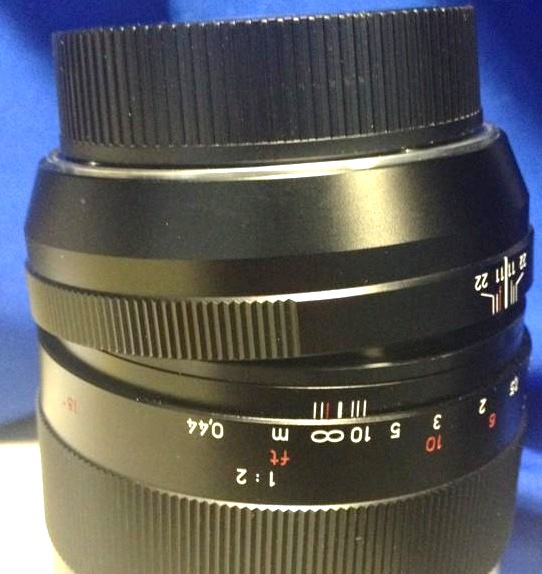Repair alerts
Lensrentals Repair Data: January – July 2012
What Is This?
We have a unique opportunity: We own a very large number of lenses subjected to rather harsh conditions. They get tossed around during shipping, and sometimes the user isn’t as careful with them as you would be with your own lenses. Basically, we have a laboratory set up to stress test camera equipment and we share those results with you.
Our numbers reflect heavy and hard use. Your personal lenses shouldn’t fail nearly as often; they aren’t subjected to rental conditions. But since all of our lenses are subject to roughly the same number of rentals per year, it does provide some comparison about how fragile various lenses are compared to other lenses.
It’s not completely scientific, but it’s a bit more useful than 10 posts on a forum going back and forth between “never had a problem with it” and “mine sucked.”
This list is not a comment about how good a lens is. It’s simply data about how often it breaks under harsh conditions. Some of my favorite lenses are on this list.
What’s New This Year?
A lot, actually. First of all I’m doing a mid-year report. We’ve got twice as many items as we did last year, so half a year’s data is equal to all of the 2011 data we collected.
In the past we’ve looked at our data as repairs per number of copies stocked over time. With better data now, we’re going to present it as the number of rental weeks per failure. That should level the playing field a bit more since nothing stops working while it’s sitting on a shelf. It also may be more appropriate since these items are used so heavily.
For example, if we have 10 copies of a lens, each copy has been rented for 10 weeks, and we’ve had one repair, that lens averages 100 rental weeks per failure.
Lens age is a bit of a variable. Our average item is less than a year old, and none are two years old. But if an item has been released in the last 8 or 9 months, all the copies are new and repairs may seem falsely low. (If it shows up when all are new, well, that’s bad.) When an item is discontinued we still stock it for a year, so all of the copies are older. (This year the Canon 24-70 is the one example.)
Additionally, we now have a 3-person repair department and do about 50% of our repairs in-house. That gives us better information on what’s going wrong. It’s much better than the “internal parts replaced and calibrated” report that we get from some service centers. For some of the lenses we can show you what the weak point actually is.
We’ve also computerized tracking for all of the repairs we’ve sent in to various service centers. This lets us track things like cost, turnaround time, repairs requiring return trips to the service center, etc. There are major differences between brands in how they approach repairs and service. I think that’s important enough to write about.
Equipment Failure Rates
What do the numbers mean?
It is an annualized repair rate of the period from January 1 through July 1, 2012. A physically damaged lens (by our observation or customer report) does not count as a failure for this list. If it’s obviously been dropped, soaked, or otherwise damaged we don’t consider it a failure. For example, if a filter ring is dented, a front element scratched, or a distance window cracked it is not a failure.
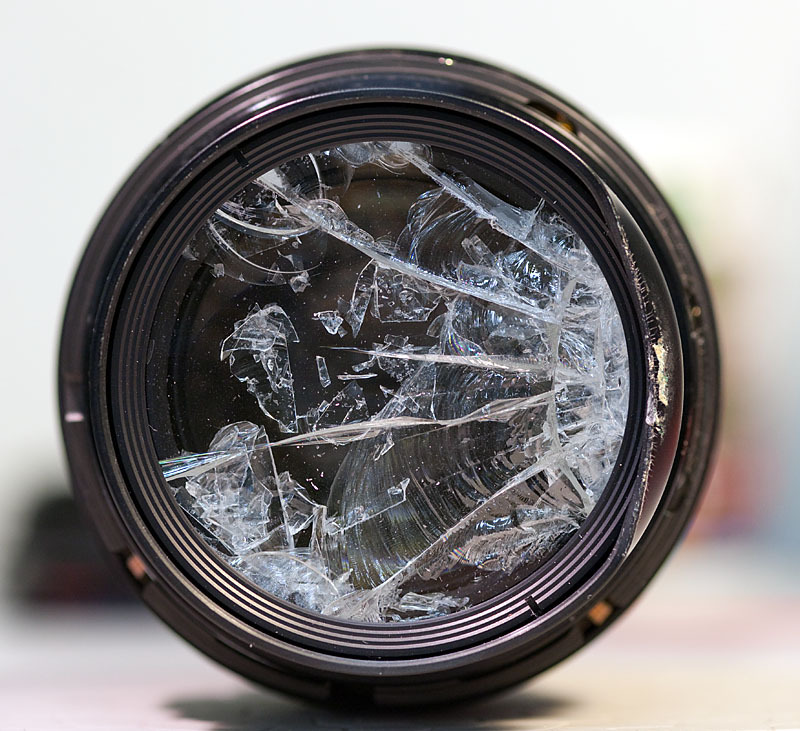
There is one less Canon 50mm f/1.0 in the world this year.
It is probable that some lenses included in these numbers actually were damaged, but there was no overt evidence that it was so. We do not accept the factory service center’s word that the failure was “secondary to shock damage,” because a number of brand new, fresh-out-of-the-box lenses that we’ve sent back for repair came back with “shock damage” as the problem.
We make no comment at all on lenses that we have less than 9 copies of (we don’t think that’s particularly useful, it’s too small of a number) or that have been in stock less than 3 months unless something spectacular is going on (there are a couple of those this time).
Limitations and Disclaimers
Now, for those of you who want to reach conclusions from the data, please note the following: the average rental weeks per failure for all lenses and cameras is just over 300 . Everything fails eventually, but that means most items takes a long time to do it.
To determine failure rates with actual statistical significance we’d need at least 400 copies of each lens. We don’t have that many (although we’re getting close on some of them) so take this data for what it is meant to be: something better than a thread telling you about 6 individuals’ lenses; but not, by any means, an infallible fact. Still, it’s better than anything else currently available that I know of.
Depending upon the lens in question we have 10 to 200+ copies. It’s obviously more meaningful when we see 20 failures in a lens we have 200 copies, than when 2 of our 20 copies failed on another lens.
I want you to get an idea of the sample size we’re dealing with, but I can’t put an exact number of copies we because it varies over time. As an example, we had 69 copies of one lens in February but 128 copies of the same lens in June. What I’ll do is use the following descriptions of the sample size: Very large – always over 150 copies in stock; Large – always over 90 copies; Moderate – always over 40 copies; Small – always between 10 and 39 copies. If we see a strong tendency in a very large sample size, it’s very likely to be a real finding. In a small sample size it could very well be random variation.
We’ll look a little further into those by telling you what it was that went wrong. If 4 different things go wrong in 4 different lenses out of 50 in stock, it’s likely to be random. If all 4 have exactly the same problem, it’s more likely there is a weakness in the lens.
The following lenses or cameras we carry were NOT evaluated because we have less than 10 copies or they were in stock less than 3 months.
- Canon: 180 f/3.5 L; 24mm f/2.8; 24mm f/2.8 IS; 28mm f/2.8 IS; 40mm f/2.8; MPE-65 Macro
- Nikon: 14mm f/2.8; 16-85mm VR; 17-35 f/2.8; 20mm f/2.8; 35 f/2D; 85mm f/3.5DX; 105 f/2 DC; 55-200 Dx
- Sony: all Alpha prime lenses; NEX 18-200 OSS; 55-210;
- Tamron: 90mm f/2.8 Di, 180 f/3.5
- Sigma: 20 f/1.8; 70mm f/2.8 Macro; 105mm macro; 180 f/2.8 OS; 300-80mm
- Rokinon: 8mm fisheye
- Panasonic: All cameras except GH2, 45-175mm lens, 100-300 lens
- Olympus m4/3: 75mm f/1.8; 14-42 II
- All Leica, Voigtlander, Pentax, Fuji, and Schneider lenses
If we carry the lens and it isn’t listed above or below, then it’s weeks per failure was greater than 155 weeks (97.5% of the items we carry had a time until failure of greater than 155 weeks).
Finally, the usual ‘don’t read this and lose your mind‘ call goes out: These are heavily used, frequently shipped lenses. A given lens would have a far lower repair rate owned by someone who uses it on weekends, takes good care of it, and doesn’t ship it around the country.
Lenses with High Failure Rates
Lens Avg. Weeks Per Failure Sample Size Common Problems
Sigma 120-300 f/2.8 OS 13 Small Cam rails (4), focusing barrel, OS
Sigma 50-500 OS 43 Moderate HSM Motor (4), OS unit (3)
Nikon 70-200 f/2.8 VR II 53 Large Tripod foot bent (8); AF adjustment (5), resolution (5)
Nikon D800 55 Large Battery door (6), electronics (3)
Tokina 16-28 f/2.8 57
Small AF/MF clutch (3 of 3)
Nikon 16-35 f/4 VR 58 Small Resolution (3 of 3)
Canon 24-70 f/2.8 65 Very Large Resolution (26); Helicoid collar (19)
Sony 70-200 f/2.8 G SSM 71 Small USM motor (3 of 3)
Canon 70-200 f/2.8 IS II 83 Very Large IS assembly (11), Optical adjustment (10); Zoom jam (10); Barrel assembly (7)
Nikon D700 109 Moderate Bent CF pins (4); Grip peeling (4); PCB (2)
Canon 35mm f/1.4 110 Large Resolution (18); USM motor (3)
Nikon 105 VR f2.8 Micro 118 Small VR (2), AF encoder (1), diaphragm (1)
Canon 100-400 IS L 126 Large MF ring (10). IS (5), AF motor (4)
Tokina 11-16 f/.28 147 Large focus jam (6); AF/MF clutch (6); loose screw (3)
Canon 5D Mk III 155 Large CF pins (8), electronics (3)
A Few Observations
Several lenses on the list are ones that we have relatively few copies of: the Sony 70-200 f/2.8; Tokina 16-28 f/2.8; Nikon 16-35 f/4 VR; and Nikon 105 f/2.8 VR. Obviously, just one repair less and they would have ranked much lower or been off the list altogether.
I still believe the Sony 70-200 f/2.8 really does have a high failure rate for a couple of reasons. First, it was also on last year’s list. Also, two other Sony zooms were all just one repair away from making the list this year (24-70 f/2.8 and 70-400) and did make it last year. Plus all of the Sony 70-200 f/2.8 repairs were for the same issue: USM motors.
All of the Tokina 16-28 f/2.8 lenses had the same problem (AF/MF clutch), which is also a chronic problem on the similarly designed Tokina 11-16 f/2.8. Because they’re all failing for the same reason, we think it’s probably a real thing.
The Nikon 105 VR, though, seems to be more of a random event. It’s never been a problem lens and the repairs were for different things.
I think the other trend that’s very obvious is that large, f/2.8 zoom lenses are likely to have issues. Sony, Canon, and Nikon 70-200 f/2.8 lenses all made the list. The Canon 100-400 is there, too, while the Nikon 80-400 and Canon 28-300 barely missed (and usually make the list). The Sigma 50-500 OS and 120-300 OS are on it, too, with the Sigma 70-200 f/2.8 OS barely missing (in a small sample size of 20 copies).
Each seems to have its own issues. The Canon 70-200 IS II has problems with the nylon reverse gears in the zoom ring and its IS unit. The 100-400 with its outer focusing barrel and notorious smooth-tighten ring. The Sigmas have HSM motor problems, OS issues, and barrel/cam issues. The plate for Nikon’s tripod foot is too thin and bends frequently, and the AF system is a bit finicky. The takeaway message is these are among the most complex lenses made today and the complexity shows in higher repair rates.
If you noticed, Sigma released a new version of the 120-300 f/2.8 OS just over a year after the original version. The optical diagram is exactly the same but I suspect we’ll see some more robust internal components in the new version. They’ve also announced new quality control measures at their manufacturing plant. Given the improvements Sigma has made in their repair service, I suspect they’re serious about improving quality.
Confirmation is Always Good
I’m always happier when I can find a logical explanation for the numbers. The Tokina lenses are a good example. They seem to have trouble with the AF-MF clutch system (if you haven’t shot with one, instead of an electrical switch or full-time manual focus, you move the focus ring forward or backward to engage manual focus). If we pull the rubber off of the focus ring, it becomes apparent the clutch is really two barrels held together by tape.
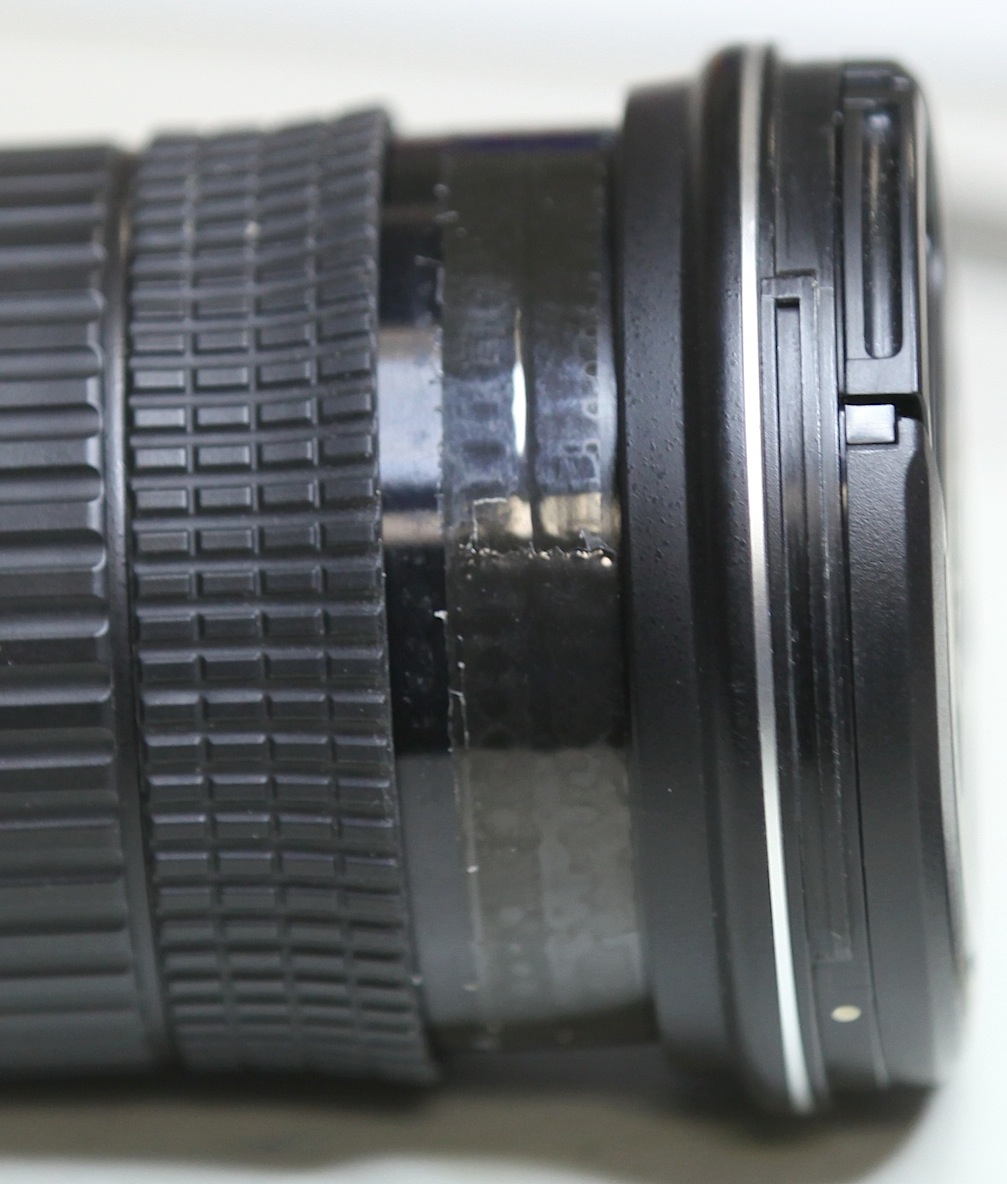
Tokina 11-16 f/2.8 with focusing rubber removed.
The lower (mount side) barrel pulls drops down once the tape is removed, showing the mechanical clutch. The teeth on the upper side engage the small collared screws in the internal focusing ring to manually focus when the clutch is pulled back to manually focus, disengage when it’s pushed forward.
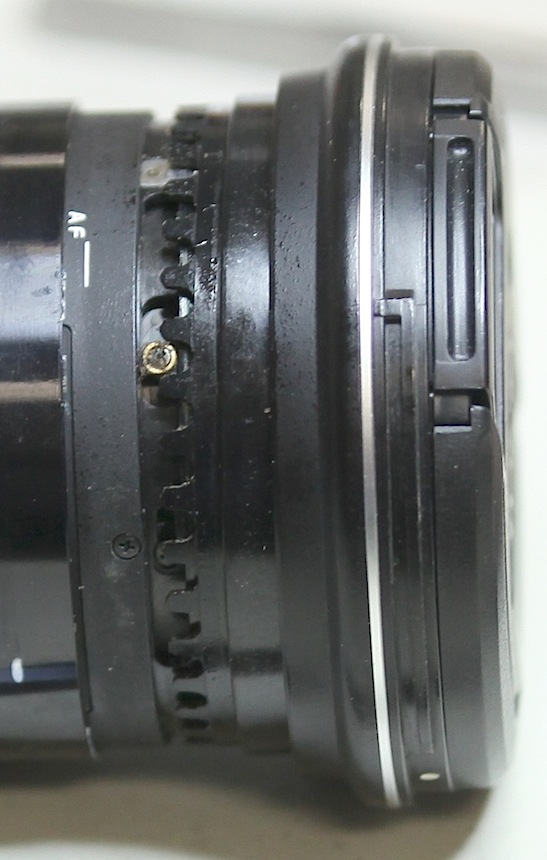
Tokina 11-16 f/2.8, focus barrel separated
A lot of grit and dirt gets in there (probably from inside the lens) and sticks because there is lubricant on the teeth. The brass collars and screws break. So it makes sense that a heavily used lens, like a rental lens, might develop problems from wear-and-tear around the clutch.
I’ve written a couple of entire posts on why the original Canon 24-70 f/2.8 tends to have problems, and as I mentioned earlier, our fleet has gotten older since we haven’t been able to buy new copies since Spring.
With the Nikon 70-200 VRII, the tripod foot bends so often that the 8 we listed are probably lower than reality. Back when Nikon sold parts we kept spares and any tech would replace it, all you have to do is remove 4 screws and put the new plate in. Now, unfortunately, it takes a trip back to Nikon.
Similarly the Canon 70-200 fails for a couple of different reasons, but jammed zoom rings are common and caused by a tooth breaking on the nylon ‘reversing’ gear under the zoom ring. this is a good system – it was used in the Non IS and IS Mk I lenses – but it seems to have some problems with the Mk II. Whether that’s a bad batch of gears or that there’s more resistance in turning the new lens I have no clue. Either way I expect it will be fixed soon.
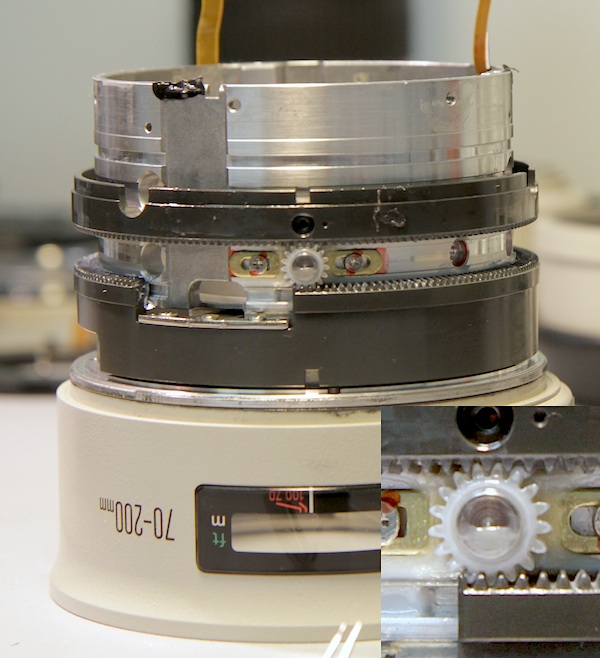
Three nylon reverse gears support the Canon 70-200 IS II zoom ring.
A Word About Cameras
This go around, the Nikon D700 is the only camera to really make the list. That was simply because of peeling grip problems, similar to what the Canon 60D had last year. But almost every camera body from every manufacturer barely missed — all had repair rates of right around 10%.
More notable, to me at least, is that we’ve already had almost 10% of our Canon 5D III and Nikon D800s repaired, despite having them in stock only a few months. I said we usually don’t put things on the list that we’ve had less than 6 months, but this is so noticeable it deserves mention. Once again, early adopters seem to be doing some beta testing.
I should mention, these aren’t ‘small number flukes’; we have a lot of these cameras. I should also mention that I’m not including ‘left side AF issues’ in the D800s required repair — we don’t have hard numbers on that yet. These were all for other things. Mostly a battery door that seems to break off if you look at it hard. I suspect either weak plastic or too thin of a pin on the door design are the likely culprits. That wouldn’t have been a big deal if you could buy replacement doors, but with Nikon’s new policy you have to send the camera in for factory service.
With 5D Mk IIIs, CF pins are bending at an amazing rate. With the latter, I suspect the combination of a CF slot and and SD slot (rather than 2 CF slots) allows CF cards to wiggle a bit more during insertion, so the card slots might not line up with the pins properly. I don’t know that there will be an easy fix for this, but be gentle putting those CF cards in your 5D III.

The CF pins inside the camera are long and fragile. If the card isn’t lined up exactly they’ll be bent or broken.
Factory Service Center, Uhm, Service
I care about this a more than most of you, probably. I send things in for repair every single day while many of you have never sent anything in for repair. But someday you will, trust me on that.
Depending upon which brand you buy, your repair experience, should you ever need it, could be great or awful. I’m personally convinced certain manufacturers are going to some lengths to make repairs a positive customer service experience, other companies are certain that internet fanboy noise will drown out the individual complaints about their horrible service.
First, let me emphasize this is USA only data; things are very different in different countries (particularly for Nikon). Second, other than a corporate account with Canon (in exchange for a large annual fee, we get to pay our bill once a month and get a 30% discount on repair prices) we send everything in just like you. When figuring repair prices for comparison purposes I’ve removed the discount and used Canon’s list prices, so all of the prices and turnaround times are the same as they would be for you. Actually, if you have NPS or CPS you get a bit faster service and lower cost than we do.
The table below shows the average (mean) turnaround time in days and average cost of repairs for each factory service center. Days are the # of days it was at the repair center; shipping does not count. Average cost is a rather blunt tool, but since most service centers use a three or four step, flat-rate repair fee schedule, it has some meaning.
| Brand | Days | Cost |
|---|---|---|
| Canon | 6 | $305 |
| Nikon | 26 | $376 |
| Sigma | 11 | $186 |
| Sony | 31 | $285 |
| Zeiss | 29 | $286 |
| Olympus | 9 | $281 |
| Tamron | 3 | xx |
| Voigtlander | > 60 | xx |
| Rokinon | > 60 | xx |
We have no cost figures for Voigtlander or Rokinon because we haven’t managed to get anything back from repair; nor from Tamron because they did not charge us for the few repairs we sent.
For the Nikon fanboys who tell me regularly ‘it’s just because they’re overwhelmed with the D800 problem.’ That’s true, but the number above is the average for the whole year. Repair turnaround was slow last year (18 days or so), got slower before the D800 was even released (25 days), and has crept up steadily since then. It’s been well over 30 days mean turnaround time for the last couple of months. So the number shown in the table is better than current reality.
Also I should point out that current Nikon repair costs are higher than the table suggests. First, I dropped an $1,800 D800 sensor replacement and $1,300 D3x sensor replacement because they were such outliers. I also used prices from the entire year — Nikon raised prices significantly in early April, just after they announced they weren’t selling parts to third-party repair centers anymore (color me paranoid if you like). In the last 3 months Nikon repair prices were significantly higher than the table shows.
Just for curiosity, I compared same-item repair costs for Nikon and Canon 24-70s. All Canon 24-70 repairs were either $268 or $370 (non-discounted price) during the entire 6-month period. All Nikon repairs were $539 or $602 from April 1 onwards; they were $310 before April (although there were only two during that period). I don’t have room to list all the replaced items, but they were similar: barrels, collars, helicoid rings.
Nikon, I love the cameras. I love the prices on the cameras. But Nikon USA’s repair and service sucks and is getting worse. And yes, Fanboy, I know they fixed your item for free in 5 days. We had one come back in 5 days, too (although not this year). I also know they have a great 5-year warranty. But how much does that help when you drop it?
Would I change brands or something over it? Of course not. That’s silly. Nikon makes excellent, reliable equipment and most people need a repair maybe once every couple of years. But I certainly am advising newcomers in a different direction, and I’d be a bit hesitant about picking up used Nikon equipment.
Finally, let me give a good word for a couple of the third-party manufacturers. Five years ago I thought Sigma’s factory service was awful and we used only independent service centers for Sigma equipment. Since then they have made clear improvements, with an easy-to-use website and polite, knowledgeable customer service on the phone. We started using them again this year and their turnaround time and prices were excellent.
While we don’t use them often, Tamron even goes a step better: they guarantee they’ll have an item fixed 3 days after they receive it (I’ve confirmed this with Pat Simonetti, Director of Tamron Customer Service). If they can’t fix it in a timely fashion, they supply a refurbished or new replacement. I should also mention that when we’ve reported a problem to Tamron or Zeiss, both make inquiries about it, getting all the information they can and passing it on to manufacturing. It’s a pleasant change from “there is no problem, we never have problems.”
Tokina is absent from the table because we stopped sending anything in to them years ago. If we can’t fix it ourselves, we use an independent service center. They may be much better now, but I have no information either way.
Roger Cicala
Lensrentals.com
September, 2012
Author: Roger Cicala
I’m Roger and I am the founder of Lensrentals.com. Hailed as one of the optic nerds here, I enjoy shooting collimated light through 30X microscope objectives in my spare time. When I do take real pictures I like using something different: a Medium format, or Pentax K1, or a Sony RX1R.
-
Floyd Ma
-
Frank Kolwicz
-
Frank Kolwicz
-
Frank Kolwicz
-
bhaishahab
-
Miranda
-
Tim Ashton
-
Henry
-
Angel
-
Angel
-
Fin
-
Roger Golub
-
Jamie
-
Bryan Stone
-
Bob Ohlemann
-
William Kazak
-
Lori
-
Cal Smith
